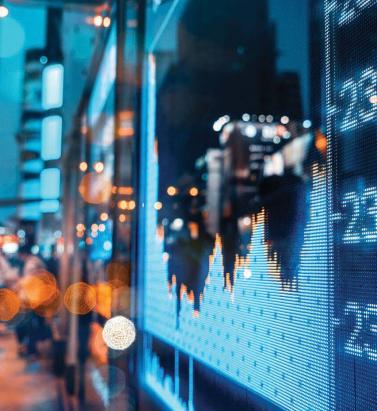Tag: Insurance Linked Securities


A Climate Model Challenge
September 06, 2019Insurance-linked securities (ILS) investors want to know more about how climate change impacts investment decisions, according to Paul Wilson, head of non-life analytics at Securis Investment Partners, an ILS asset manager We make investments that are typically annual to two-to-three years in duration, so we need to understand the implications of climate change on those timescales,” explains Paul Wilson, head of non-life analytics at Securis Investment Partners. “We reevaluate investments as part of any renewal process, and it’s right to ask if any opportunity is still attractive given what we know about how our climate is changing. “The fundamental question that we’re trying to address is, ‘Have I priced the risk of this investment correctly for the next year?’” he continues. “And therefore, we need to know if the catastrophe models we are using accurately account for the impact climate change may be having. Or are they overly reliant on historical data and, as such, are not actually representing the true current risk levels for today’s climate?” Expertise in climate change is a requirement for how Securis is thinking about risk. “We have investors who are asking questions about climate change, and we have a responsibility to be able to demonstrate to them that we are taking the implications into consideration in our investment decisions.” “We have investors who are asking questions about climate change, and we have a responsibility to demonstrate to them that we are taking the implications into consideration in our investment decisions Paul Wilson Securis Investment Partners The rate at which a changing climate may influence natural catastrophes will present both a challenge and opportunity to the wider industry as well as to catastrophe modeling companies, thinks Wilson. The results coming out of climate change attribution studies are going to have to start informing the decisions around risk. For example, according to attribution studies, climate change tripled the chances of Hurricane Harvey’s record rainfall. “Climate change is a big challenge for the catastrophe modeling community,” he says. “It’s going to put a greater burden on catastrophe modelers to ensure that their models are up to date. The frequency and nature of model updates will have to change. Models we are using today may become out of date in just a few years’ time. That’s interesting when you think about the number of perils and regions where climate change could have a significant impact. “All of those climate-related models could be impacted by climate change, so we have to question the impact that is having today,” he adds. “If the model you are using to price the risk has been calibrated to the last 50 years, but you believe the last 10 or last 20 years are more representative because of the implication of climate change, then how do you adjust your model according to that? That’s the question we should all be looking to address.”


ILS: A Responsible Investment Approach
September 06, 2019As environmental, social and governance principles become more prominent in guiding investment strategies, the ILS market must respond In recent years, there has been a sharper focus by the investment community on responsible investment. One indicator of this has been the increased adoption of the Principles for Responsible Investment (PRI), as environmental, social and governance (ESG) concerns become a more prominent influencer of investment strategies. Investment houses are also seeking closer alignment between their ESG practices and the United Nations’ Sustainable Development Goals (SDGs). The 17 interconnected SDGs, set in 2015, are a call to action to end poverty, achieve peace and prosperity for all, and create a sustainable society by 2030. As investors target more demonstrable outcomes from their investment practices, is there a possible opportunity for the insurance-linked securities (ILS) market to grow, given the potential societal capital that insurance can generate? “Insurance certainly has all of the hallmarks of an ESG-compatible investment opportunity,” believes Charlotte Acton, director of capital and resilience solutions at RMS. “It has the potential to promote resilience through enabling broader access and uptake of appropriate affordable financial protection and reducing the protection gap; supporting faster and more efficient responses to disasters; and incentivizing mitigation and resilient building practices pre- and post-event.” RMS has been collaborating on numerous initiatives designed to further the role of insurance and insurance technologies in disaster and climate-change resilience. These include exploring ways to monetize the dividends of resilience to incentivize resilient building, using catastrophe models to quantify the benefits of resilience investments such as flood defenses, and earthquake retrofit programs for housing. The work has also involved designing innovative parametric structures to provide rapid post-disaster liquidity. “Investors will want a clear understanding of the exposure or assets that are being protected and whether they are ESG-friendly” Charlotte Acton RMS “ILS offers a clear route for investors to engage with insurance,” explains Acton, “broadening the capital pool that supports insurance is critical as it facilitates the expansion of insurance to new regions and allows the industry to absorb increasingly large losses from growing threats such as climate change.” Viewed as a force for social good, it can certainly be argued that insurance-linked securities supports a number of the U.N.’s SDGs, including reducing the human impact of disasters and creating more sustainable cities, increasing overall resilience levels and increasing access to financial services that enhance sustainable growth potential. While there is opportunity for ILS to play a large part in ESG, the specific role of ILS within PRI is still being determined. According to LGT Capital Partners ESG Report 2019, managers in the ILS space have, in general, yet to start “actively integrating ESG into their investment strategies,” adding that across the ILS asset class “there is still little agreement on how ESG considerations should be applied. However, there is movement in this area. For example, the Bermuda Stock Exchange, a primary exchange for ILS issuers, recently launched an ESG initiative in line with the World Federation of Exchanges’ Sustainability Principles, stating that ESG was a priority in 2019 “with the aim to empower sustainable and responsible growth for its member companies, listings and the wider community.” For ILS to become a key investment option for ESG-focused investors, it must be able to demonstrate its sustainability credentials clearly. “Investors will want a clear understanding of the exposure or assets that are being protected,” Acton explains, “and whether they are ESG-friendly. They will want to know whether the protection offered provides significant societal benefits. If the ILS market can factor ESG considerations into its approach more effectively, then there is no reason why it should not attract greater attention from responsible investors.”




